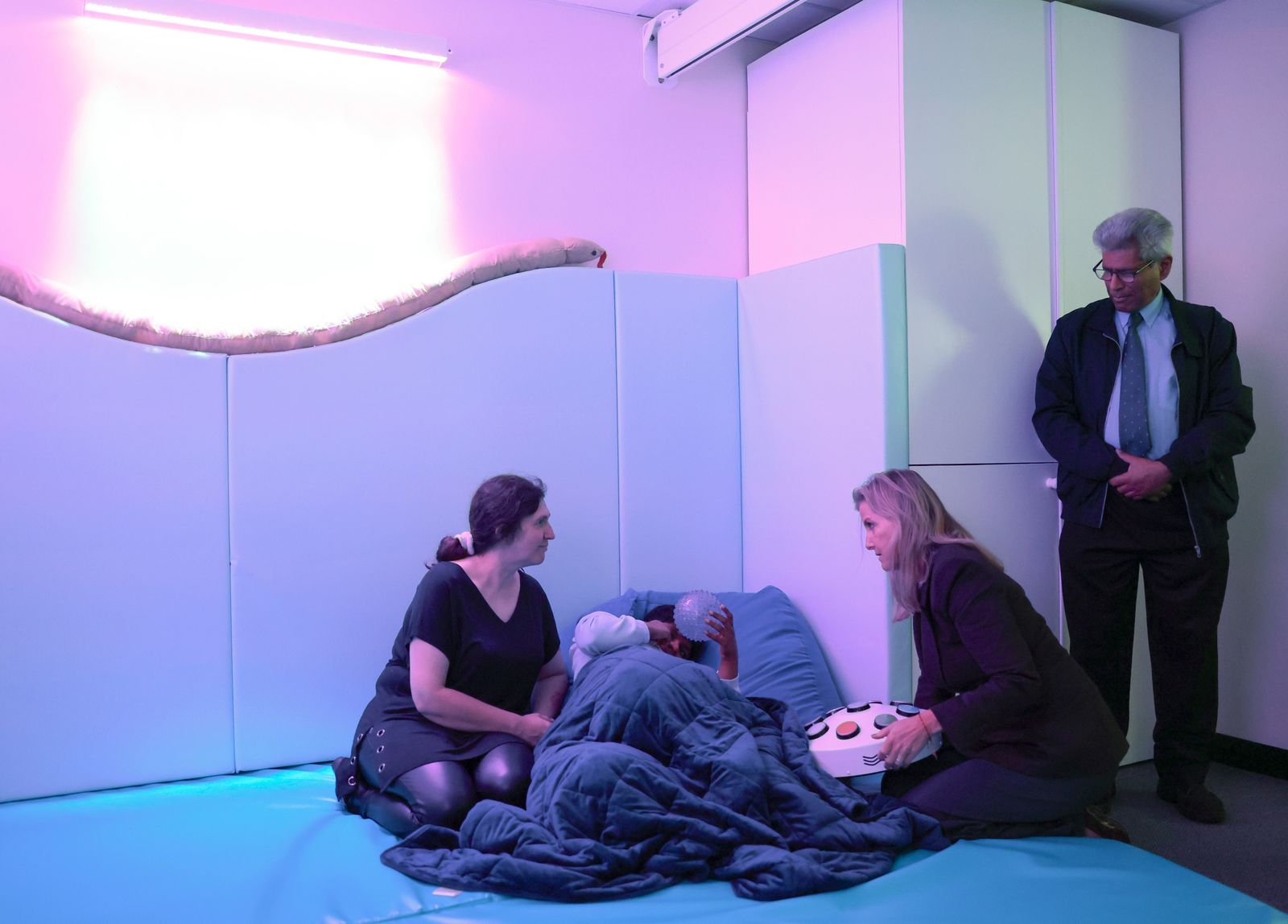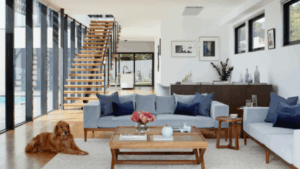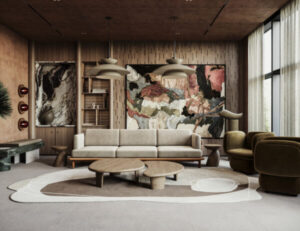Credit: architecturaldigest.com
Design lovers can appreciate the effect atmosphere has on wellbeing. The value of an aesthetically pleasing, accommodating space is dialed up further when it comes to sensory rooms, which are environments designed specifically to help children with sensory processing disorders—including autism—by offering them a serene area for regulating sensory input.
Sensory rooms can be found in a growing number of public venues, from airports to football stadiums. The sensory room at Madison Square Garden in New York City, for example, boasts beanbag chairs and tactile toys, operating as a retreat from the intense noises that accompany a major indoor venue. But sensory rooms aren’t just for commercial buildings; many parents of children with autism are creating these spaces in their homes.

Guests visit the sensory room at Boston Logan International Airport, which officially opened October 2023.
Photo: Craig F. Walker/The Boston Globe via Getty ImagesWhat is a sensory room?
Athina Papadopoulou, assistant professor in the department of architecture, health, and design, at the New York Institute of Technology, describes sensory rooms as spaces that offer a safe environment in which to manage psychophysiological responses to sensory input. Individuals with autism—as well as those with ADHD, sensory processing disorders, or other neurodevelopmental or psychological conditions—may be hypersensitive or hyposensitive to light, sound, or texture. “These sensory differences can result in discomfort, anxiety, or difficulty concentrating in typical environments,” she says.
Sensory rooms provide a space for either soothing or stimulation. For hypersensitive individuals, they reduce overwhelming input through features like dimmable lights, soft textures, and calming sounds; for hyposensitive individuals, they offer enriched sensory experiences, such as tactile panels, vibration platforms, or dynamic lighting, to engage under-responsive systems, per Papadopoulou.

Sophie, Duchess Of Edinburgh (second from right) meets a student in the sensory room during a September 2024 visit to Parity for Disability in Camberley, England.
Photo: Chris Jackson/Getty ImagesWhat to include—or avoid—in designing a sensory room for a child with autism
This all depends on the child. “I found that some clients with autism do not tolerate textures of any kind,” interior designer Sarah Barnard of WELL AP + LEED AP says. A few largely tolerated textures in Barnard’s experiences have been flat weave and smooth materials, like a polished cotton, though some children with autism might not like this—“so never make any assumptions.” Papadopoulou recommends a few potential solutions to finding what works when creating sensory rooms for kids with autism. One approach involves having a therapist guide the child through tailored products within the sensory room to identify what items are a good fit for them; another is to design focused “micro-rooms,” with each serving a distinct purpose, such as promoting calmness or providing stimulation.
Sensory rooms in action
When the parents of a young girl with autism asked YDC Design creative director Rose Praino to craft a sensory room for their daughter, they wanted a space that supported sleep and a sense of calm. “We approach sensory-responsive interiors through our NeuroSensory Design method, which focuses not only on aesthetics but on fostering emotional well-being and intuitive, body-centered calm,” Praino explains.










